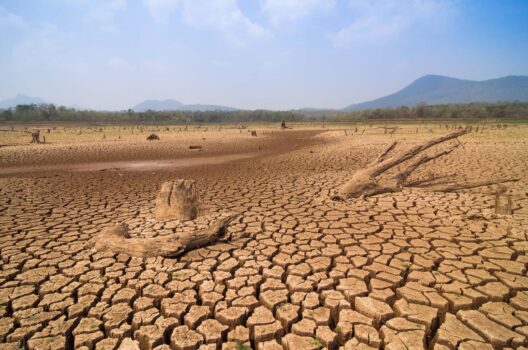Canada, an expanse of diverse landscapes and rich natural resources, is often viewed as a bastion of environmental preservation. However, underneath its frosted lakes and sprawling forests, a silent crisis is brewing—the climate crisis. Just as a single tree sways in the breeze, shaping the ecosystem around it, each individual’s actions in conservation can influence the broader climate. To tackle this issue effectively, we must unite in our efforts to conserve energy. This act serves not only as a practical response to climate change but also as a manifestation of our commitment to preserving the very fabric of our planet.
Energy conservation in Canada is akin to nurturing a delicate ecosystem. Every effort contributes to a greener future, reducing our carbon footprint while fostering resilience within our communities. Below are significant approaches to conserving energy and facilitating the transition toward sustainability.
1. Embracing Energy Efficiency in Homes
Residential energy consumption constitutes a significant portion of Canada’s overall energy use. Implementing energy-efficient practices at home is essential. Consider your dwelling as a vessel navigating turbulent waters; it is paramount to retrofit it to withstand storms while maintaining harmony with its surroundings. Simple adjustments can have profound effects:
- Insulation: Adequate insulation can decrease heating requirements during the frigid Canadian winters. This enhances comfort while minimizing energy expenditures.
- Windows: Upgrading to double or triple-glazed windows prevents thermal loss, allowing the sun’s rays to warm living spaces, akin to wearing a warm quilt on a chilly night.
- Appliances: By swapping obsolete appliances for modern, energy-star-rated devices, one can significantly curb electricity consumption without sacrificing functionality.
These measures not only contribute to reduced energy consumption but can also lead to tangible financial savings. The interplay between energy efficiency and cost-effectiveness transforms a mundane act of conservation into an economically appealing choice.
2. Consideration of Renewable Energy Sources
Envision the sun beaming down on Canada’s vast landscapes—this energy is boundless and underutilized. Harnessing renewable resources such as solar, wind, and hydroelectric power can significantly decrease reliance on fossil fuels. The transition to clean energy is not merely an option but a necessity:
- Solar Panels: Installing solar panels on rooftops entails an initial investment, but in due course, it pays off through reduced energy bills and federal incentives for sustainable energy solutions.
- Wind Energy: With extensive plains and coastlines, Canada can further capitalize on wind energy production, positioning itself as a leader in this domain.
- Hydropower: The abundance of water bodies grants a unique opportunity for hydroelectricity generation, a well-established and reliable renewable energy source.
Transitioning to renewable energy is akin to planting flora in the earth; it requires nurturing, but the eventual yields are bountiful when the community thrives with sustainable energy practices.
3. Transportation Modalities
The manner in which Canadians navigate their cities is intrinsic to energy conservation. Transportation options can be reconfigured to minimize environmental harm. Embracing active forms of transit—bicycles, walking, or public transport—can contribute substantively to energy reduction:
- Public Transport: Robust public transportation systems diminish the reliance on individual vehicles. Cities should enhance public transit accessibility, making it the preferred mode of travel.
- Carpooling: Carpooling initiatives should be fostered within communities. Just as a flock of birds maneuvers together for efficiency, so too can individuals share rides, reducing the total number of vehicles on the road.
- Electric Vehicles (EVs): Promoting EVs is a vital step; they represent a tangible commitment to reducing air pollution and dependence on fossil fuels. Integration of charging stations across urban and rural areas supports this transition.
Redefining transportation habits embodies the proverb “a journey of a thousand miles begins with a single step.” Each sustainable choice nudges society closer to holistic transformation.
4. Advocating for Policy Change
Individual actions resonate, but systemic change is equally critical in amplifying energy conservation initiatives. Advocating for robust environmental policies equips citizens with the collective power to influence governmental action. Just as a river carves its path through rock over time, persistent advocacy can lead to substantial policy reforms:
- Incentives: Stronger governmental incentives for renewable energy adoption should be prioritized, thus catalyzing widespread shifts towards sustainable systems.
- Regulations: Stricter regulations on emissions from industrial sectors and residential buildings can establish benchmarks for energy conservation, ensuring that all Canadians participate.
Lobbing for policy change transforms from a mere hope into a planned campaign; it utilizes grassroots movements to push for reforms that affect the macrocosm of energy usage.
5. Cultivating Awareness and Education
In the quest for energy conservation, knowledge serves as the soil from which action can grow. Advocating for educational programs that focus on energy conservation and climate action fosters a greater understanding of the ecological footprint. By educating future generations, we plant the seeds necessary for cultivating a culture of sustainability:
- Workshops and Seminars: Communities can initiate workshops that educate residents on practical energy-saving techniques, DIY improvements, and local resources.
- School Programs: Incorporating climate education into school curricula empowers children to recognize their role in environmental dynamics.
Every enlightening conversation ignites a spark of awareness that can illuminate countless paths toward sustainable energy practices.
As Canada navigates the turbulent waters of climate change, each individual’s commitment to energy conservation acts as a steadfast navigational chart, guiding society toward a sustainable horizon. Through concerted efforts in energy efficiency, renewable sources, responsible transportation, impactful policy advocacy, and educational cultivation, the collective endeavor resembles the intricate interdependencies of a thriving ecosystem. Together, through informed action, we can combat the climate crisis and foster a resilient future for generations to come. Let us embark on this journey, united in purpose and steered by compassion for our planet.








